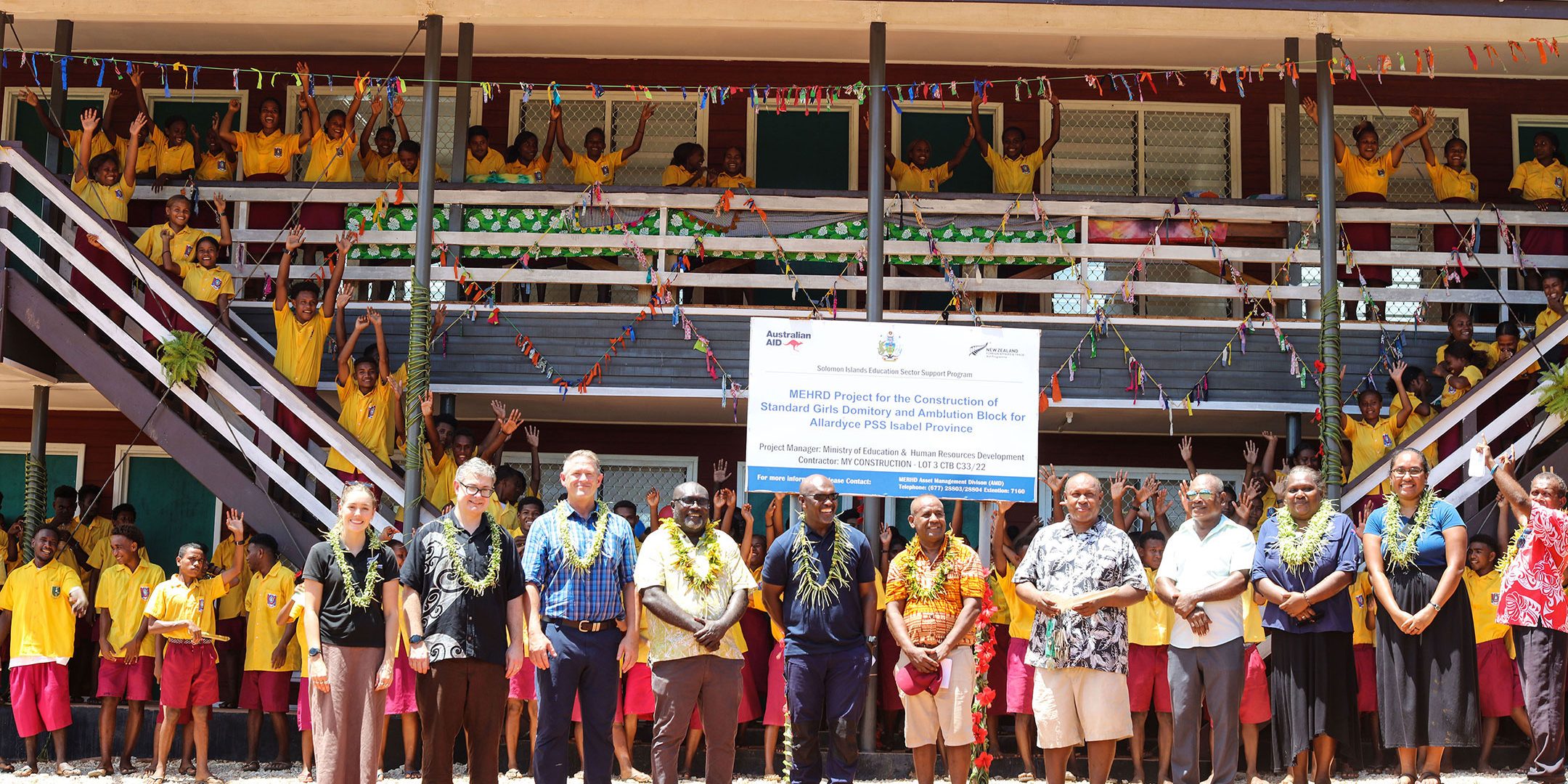Surrounded by lush hills and dense mangroves inside the Maramasike passage in Malaita Province, Hunanawa Community High School serves as a central hub for education in that remote East Are’Are region.
Due to its remoteness, accessing quality education infrastructure is an ongoing challenge for the school.
Australia and New Zealand eased that challenge by funding a classroom building worth SBD1.4 million, which was handed over to the school in March 2025.
Hunanawa School Principal, Mr Samuel Maetara says the new classroom building has really helped the school, especially their year 10 students who are using the new facility.
“This new classroom building will not only benefit our community in Hunanawa but also the surrounding communities as their schools does not reach year 10.
“Education is the right of every child. So, when we provide them with such facilities, we address some of the issues faced by children and schools in our remote areas.
“Building such facilities on our own is very costly for us because of our remoteness and so we thank the Australian and New Zealand Governments,” Mr Maetara said.
The Hunanawa classroom building project was funded under the Education Sector Support Program (ESSP), a program supported by the Governments of Australia and New Zealand in partnership with the Solomon Islands Ministry of Education and Human Resources Development.
Since 2019, ESSP has increased access to quality basic education by delivering new and refurbished education infrastructure.
All the projects under this program have directly benefitted approximately 17,510 students (8,670 female and 8,840 male) and 827 teachers, removing barriers and improving access to quality education for thousands of students across all provinces.
Including Hunanawa Community High School, the program has successfully scoped, designed and constructed 39 infrastructure projects, valued at approximately SBD66.9 million, aiming to address cross-cutting needs at each of the schools.
Goldie College in the Western Province is now using their new SBD1.8 million boys’ dormitory which is addressing the accommodation needs for the college’s 600 students.
“The College really needs help with accommodation for our students as the state of our current dormitories are not up to standard. That is why we are very happy with this new double-story dormitory for our boys.
“We acknowledge Australia and New Zealand for their partnership with us to provide a friendly and safe accommodation for our students in the process investing in their academic pursuit,” Principal, Ms Deidre Zeke Piko, said.
At Tabaka Rural Training Centre (RTC) in New Georgia, the recent addition of a SBD$2.6 million double-story girls’ dormitory and ablution block is now attracting increased female enrollment, enhancing educational opportunities for girls.
“These standard facilities will definitely support the learning of our students and will help in preparing them to meet the required standard of delivery for accredited TVET courses in Solomon Islands,” Tabaka RTC Principal, Joash Lawrence, said.
Principal of Reginald Chapman Nicholson College in Vella la Vela, Mr Lawrence Zaza described the school’s new SBD1.6 million science laboratory as a ‘gift and blessing’ from the people of Australia and New Zealand.
“This development will definitely boost the level of learning at the school as students will be more determined to excel in such a good learning environment,” Mr Lawrance said.
On the eastern end of Solomon Islands in Ulawa Island is Pirupiru Community High School. The school has had little to no support in terms of education infrastructure since its establishment, according to School Principal, Mr Reuben Mareitehi.
The school serves communities all around Ulawa Island and is also home to students from other parts of Makira/Ulawa Province.
“This is why we are so grateful for the support from Australia and New Zealand which will benefit students now and into the future for many more years to come.
“The science laboratory will promote innovation among the students and the home economic laboratory will develop household skills and life skills for our students, so we are very grateful for the support,” Mr Mareitehi said.
In April this year, Pirupiru school took delivery of their new science laboratory and home economics laboratory valued at SBD1.3 million.
Students now have access to high-quality education infrastructure, including a brand-new science laboratory and a well-equipped home economics classroom, significantly enhancing their learning experience.
In Isabel Province, at Allardyce Provincial Secondary School, lack of safe sanitation, running water, and hygiene facilities meant their female students struggled to cope with their studies.
This is now a thing of the past, as the school received a new SBD2.7 million double-story girls’ dormitory and ablution block this year.
“Now our girls can come to class on time because they have access to these standard facilities,” Principal, Mr Redley Neso, said.
“These facilities will improve the learning of our students because they have a good place to sleep. And they have proper sanitation that will keep them healthy. With a healthy mind and healthy living, it contributes to good outcomes for our school children,” he added.
These collective achievements highlight the transformative impact of Australia and New Zealand’s support through the program, significantly advancing the quality and accessibility of education across Solomon Islands.
Under new education programs in partnership with the Ministry, Australia and New Zealand will build on the successes of ESSP, to further enhance educational opportunities and promote the delivery of quality education for all Solomon Islands’ children.
- ESSP









